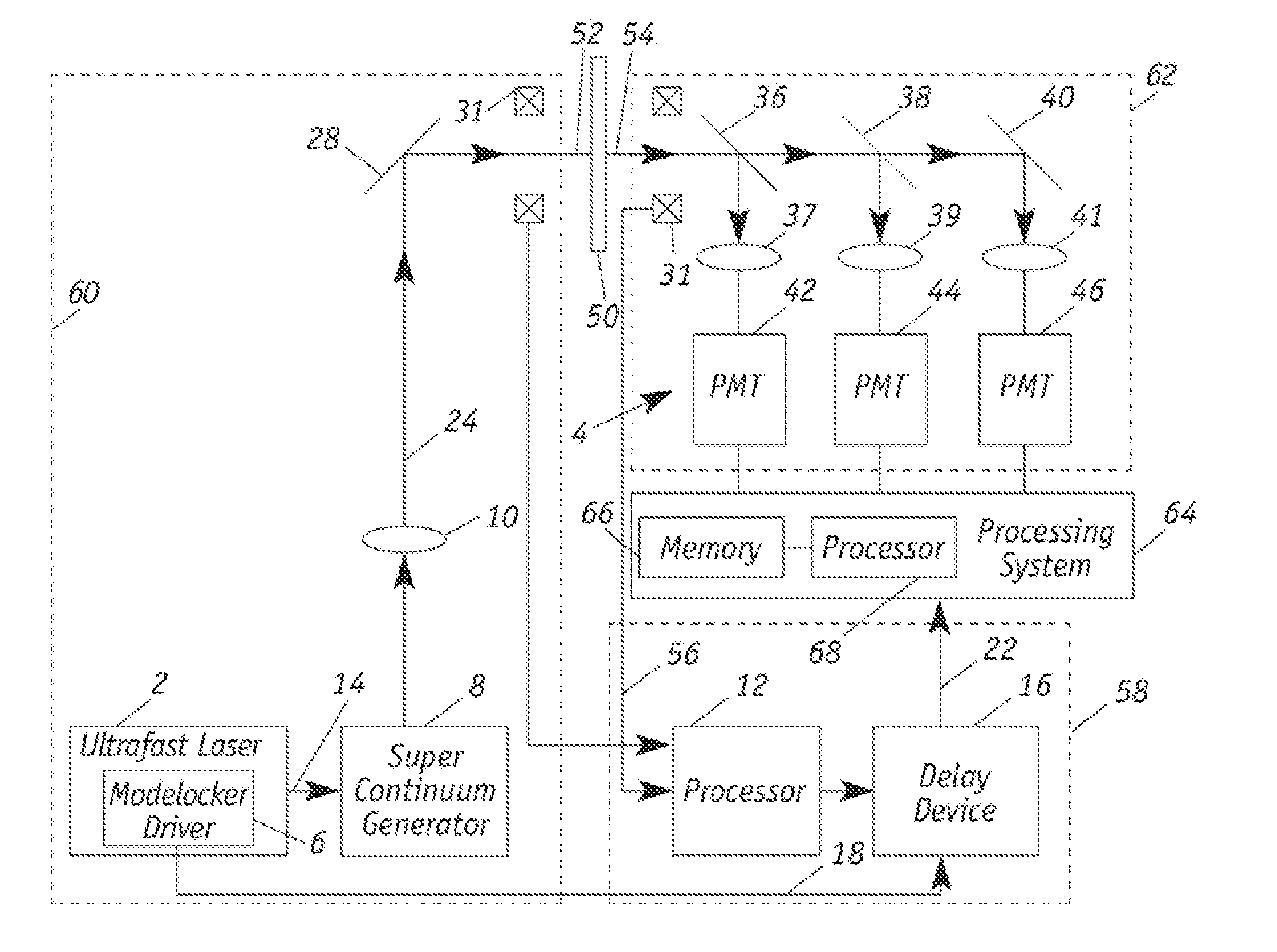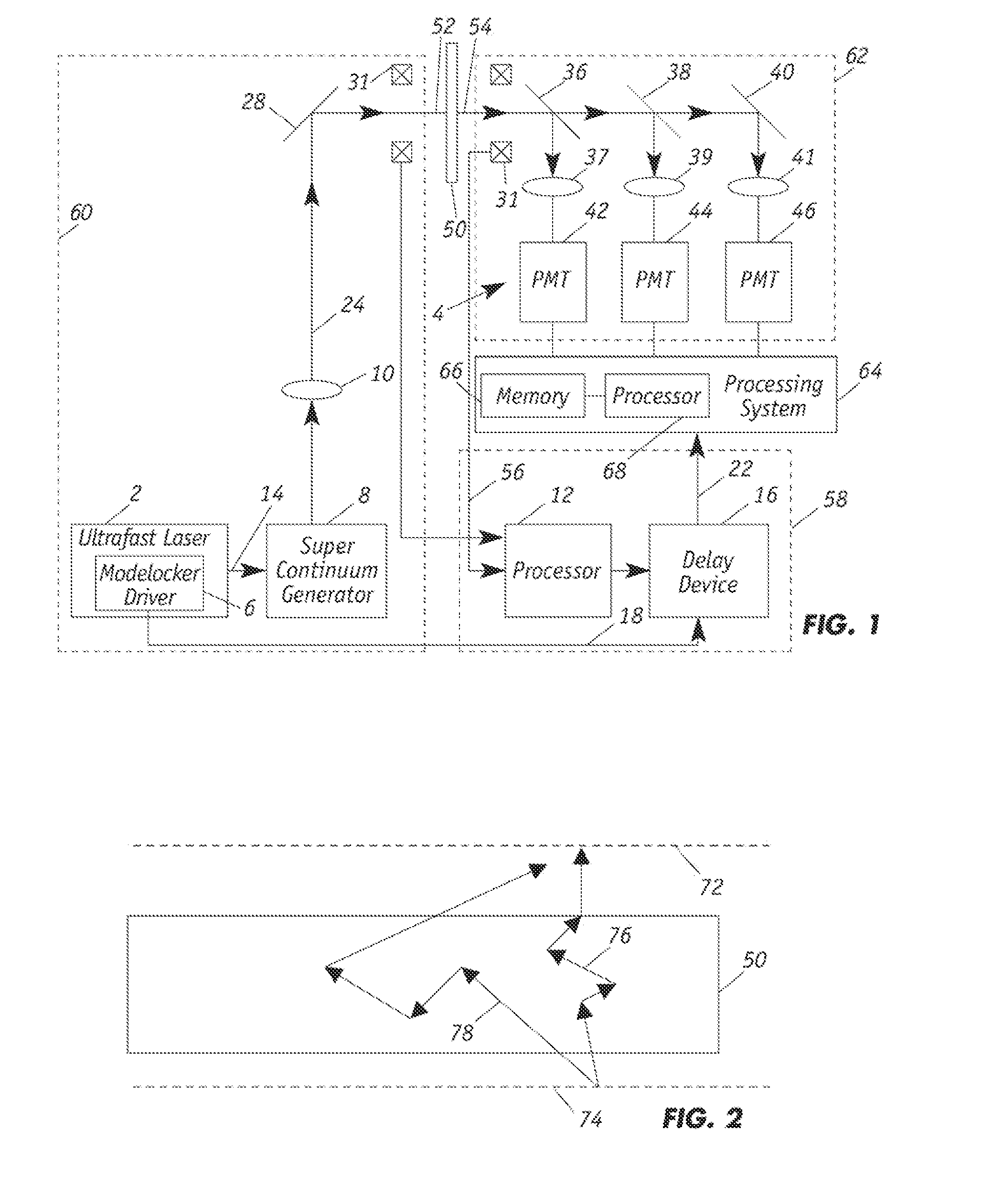Increased Absorption-Measurement Accuracy Through Windowing of Photon-Transit Times to Account for Scattering in Continuous Webs and Powders
a technology of photon transit time and measurement accuracy, applied in the field of scanning sensors, can solve the problems of reducing the accuracy of absorption-type measurements, cellulose/air interfaces leading to significant light scattering, etc., and achieves more accurate and universal calibrations. , the effect of more accurate absorption measurements
- Summary
- Abstract
- Description
- Claims
- Application Information
AI Technical Summary
Benefits of technology
Problems solved by technology
Method used
Image
Examples
Embodiment Construction
[0026]FIG. 1 shows the structure of a NIR sensor apparatus for monitoring at least one property of the moving sheet or web of material 50. The NIR sensor is particularly suited for measuring properties of continuous web materials such as sheets of paper or plastic. The sensor can also be readily adapted to measure a continuous stream of discrete materials, such as powder compositions, that is conveyed past the sensor. The sensor generates NIR radiation 52 that is directed to material 50 and measures the radiation that emerges therefrom using time-correlated single-photon counting (TCSPC). The principle of TCSPC is the detection of single photons and the measurement of their arrival times with respect to a reference signal, usually a light source. TCSPC is a statistical method and a high repetitive light source is employed to accumulate a sufficient number of photon events for a required statistical data precision. For example, a light source can be employed to generate both the (i) ...
PUM
| Property | Measurement | Unit |
|---|---|---|
| electrical | aaaaa | aaaaa |
| distance | aaaaa | aaaaa |
| inductive displacement sensor | aaaaa | aaaaa |
Abstract
Description
Claims
Application Information
 Login to View More
Login to View More - R&D
- Intellectual Property
- Life Sciences
- Materials
- Tech Scout
- Unparalleled Data Quality
- Higher Quality Content
- 60% Fewer Hallucinations
Browse by: Latest US Patents, China's latest patents, Technical Efficacy Thesaurus, Application Domain, Technology Topic, Popular Technical Reports.
© 2025 PatSnap. All rights reserved.Legal|Privacy policy|Modern Slavery Act Transparency Statement|Sitemap|About US| Contact US: help@patsnap.com



